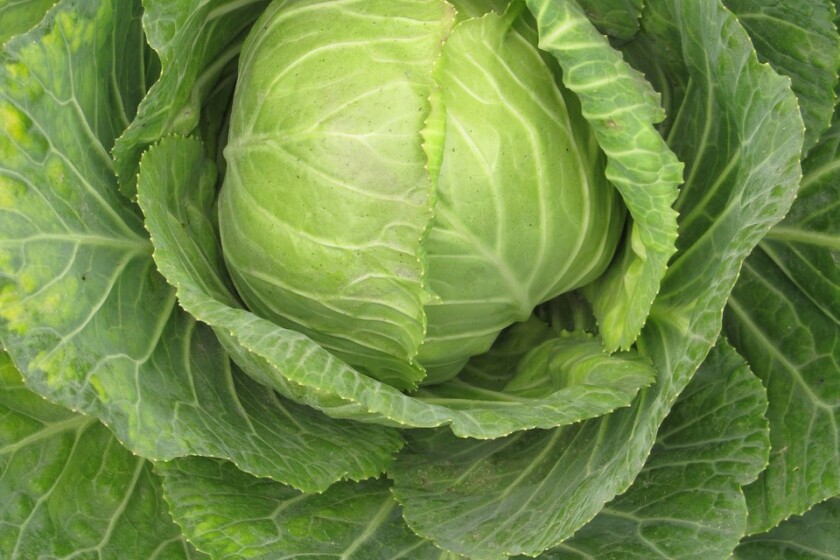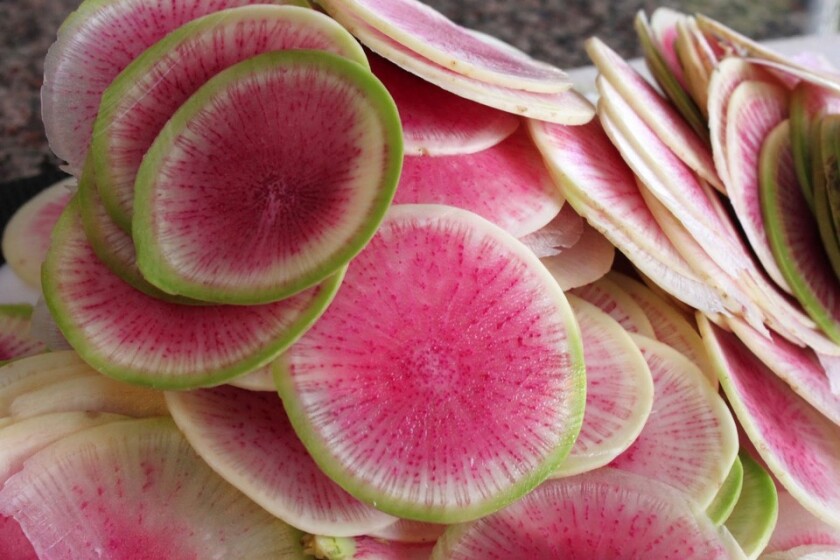Cool crops for winter gardens

Kuroda carrots, available as seeds from San Diego Seed Company. (San Diego Seed Company)
Time is right to plant grow-at-home produce that thrives in colder temperatures
Imagine growing all the vegetables and herbs you and your family need all year round and enjoying unusual varieties not easily found in markets. Joyce Gemmell is a San Diego Master Gardener who does this. Living in an apartment in urban San Diego doesn’t interfere with her efforts, because she grows all she needs in a 4-by-20-foot plot in a nearby community garden.
Now, in what gardeners call the “cool season,” she has planted broccoli, kale, radishes, carrots, various types of lettuce, chives, parsley, dill and lots more. She’s already making tasty salads with thinnings (young seedlings need to be thinned out in the garden to give more space to plants as they grow). She also grows mixes of greens called mesclun, and she snips them as they grow.
Her bountiful garden is the result of making sure that the garden soil is prepared with care before she sets out seeds or seedlings.
“After I harvest all the crops from the warm season, like tomatoes, beans and peas, I turn the soil and add well composted chicken manure that I buy from a local nursery. After the soil is prepared, I make sure the bed is watered to a depth of 18 inches with a drip irrigation system,” she explained. “I let it sit for a day or so and then plant with seedlings or seeds.”
If all this seems like too much time and effort for you, a simple way to enjoy fresh greens or herbs is by growing them in containers. Gemmell recommends using a half-barrel or similarly large container and placing it as close to a kitchen door as possible, making certain that the container gets at least six to eight hours of sunlight. Fill the container with good quality potting mix, and scatter seeds or plant seedlings available at local nurseries, according to planting instructions. Water when the soil is dry an inch below the surface and fertilize once or twice monthly with water soluble or granular fertilizer according to package instructions. Container plants need more fertilizer than those in the ground because nutrients can leach out with watering. Harvest as desired and be sure to thin plants to give them the space they need to develop.
San Diego, along with the rest of Southern California, has two growing seasons — warm and cool — and November is a good time to plant vegetables and herbs that prefer cool weather. But since days are shorter during this season, it’s important to select varieties that are considered early crops.
Brijette Peña, founder of San Diego Seed Company, specializes in growing and selling varieties of vegetables, herbs and flowers especially suited to San Diego. She evaluates plants at her certified organic farm in San Diego.
Peña recommends growing from seeds instead of commercially available seedlings for several reasons. “Planting from seeds gives you more diversity than buying starts at nurseries and garden centers,” she said. “By producing seeds in the very place that they are intended to be grown, the food crops can adapt to local growing conditions. This makes these crops more resistant to local plant diseases and pests, as well as better adapted to environmental conditions and soil structure.
“I encourage people to start their seeds in small pots instead of planting directly in the ground,” she added. “When they are strong enough to place in the garden, it’s easy to space them for their best growth.”
Another benefit she cited is that seeds started in pots are protected from garden insects that attack seedlings as they emerge from the ground. In most of San Diego County, seeds don’t have to be grown indoors, except in areas that get freezes.
She recommends this method even for root crops which traditionally are directly sown in the garden. “Even though this is considered a radical idea, I’ve had great success growing them in pots and then planting the seedlings in the ground, because I can control how to space them.”
Here are a few vegetables Peña recommends for San Diego gardeners:
Arugula: This leaf vegetable with peppery flavor thrives in cool weather and has a milder flavor than when grown in hotter weather. It can be planted year-round in moderate areas, and it can reseed.

Beets: Bull’s Blood has deep red and purple leaves with roots that are blood-red. This particular beet is grown just as much for its colorful leaves as it is for the beet itself. Another variety that thrives in this region is an Italian heirloom, Chioggia, which is distinctively red and white.

Broccoli: Calabrese, a popular market variety, produces tight heads and side shoots that can be harvested for an extended period of time.

Cabbage: As the name implies, the Copenhagen Market Early variety is quick to reach maturity, compared with other slower growing varieties. Harvest when ball-shaped head is 4 to 5 pounds.

Cauliflower: Romanesco has striking lime-green heads that are attractive in the garden. Its delicate, nutty flavor makes it one of the most popular cauliflower varieties.

Carrots: Long, short and in-between, there are many varieties of carrots from which to choose. Some are even yellow or purple. Harvest young carrots for tender “babies” or leave them in the ground to mature.

Chard: Rainbow multicolor chard has stems in white, gold, pink and deep crimson, pink striped, orange, scarlet, purple and green. Best when harvested young for salads but may be harvested all season long. Plants can reach up to 6 feet tall if left to reseed in the garden.

Dill: Mammoth Long Island Dill is recommended for this region because it matures quickly and produces large quantities of seed heads for use in pickles, dressings or bread. Delicate leaves add flavor to salads.

Lettuce: Many varieties and mixes are available. “Freckles” is a speckled romaine type that takes more heat and is slow to bolt. Harvest leaves as needed and plants will continue to produce more.

Radishes: These edible roots are quick to mature for use in salads or stir frying. “Watermelon” is a popular heirloom variety with vivid pink centers.
Dardick is a freelance garden writer

